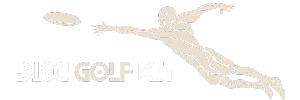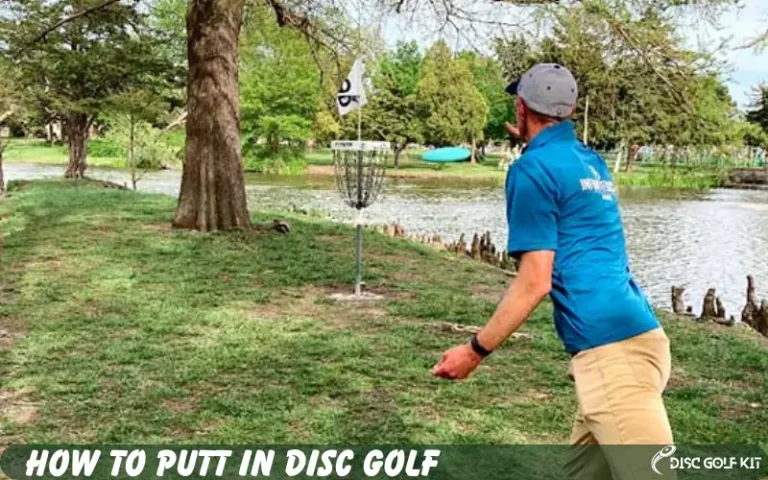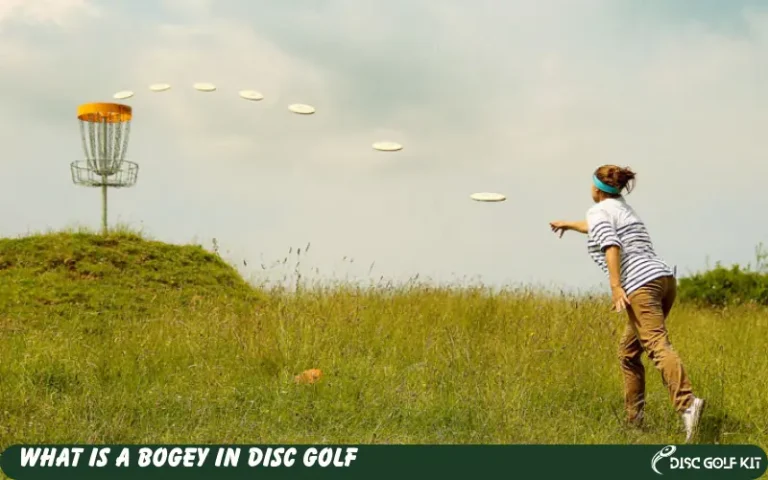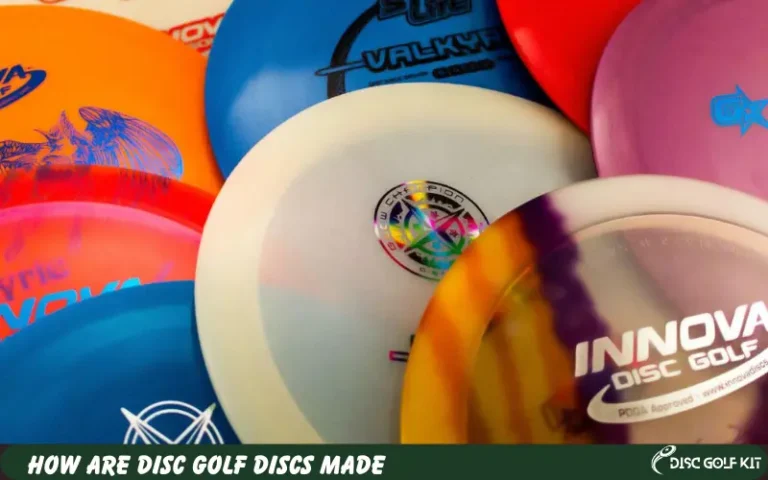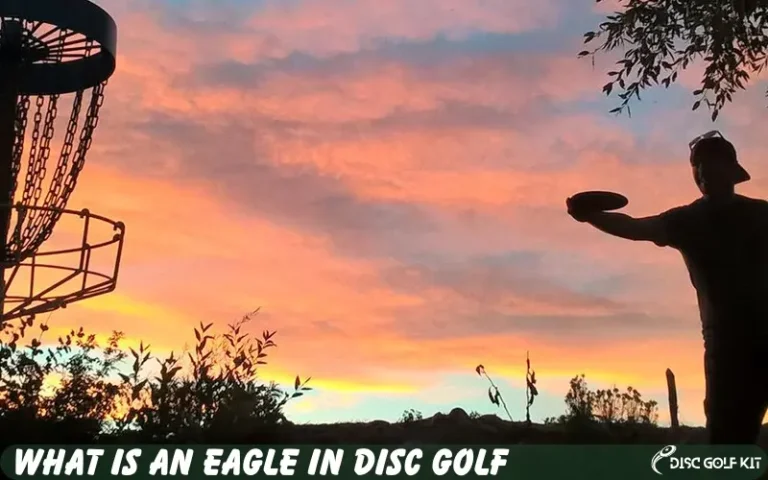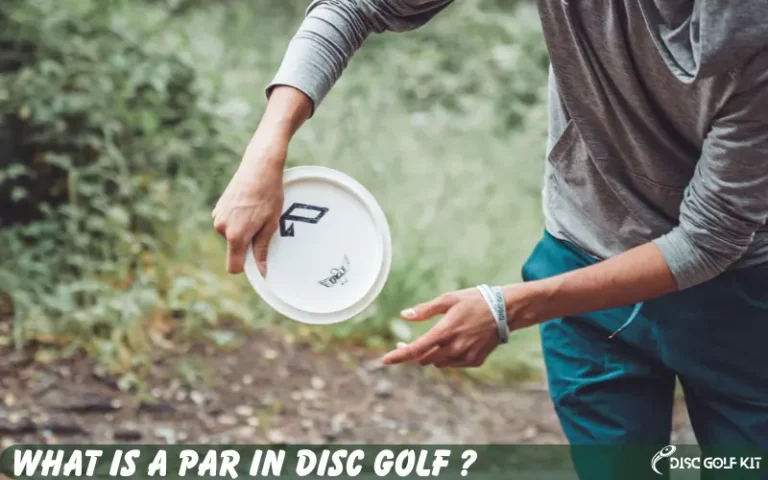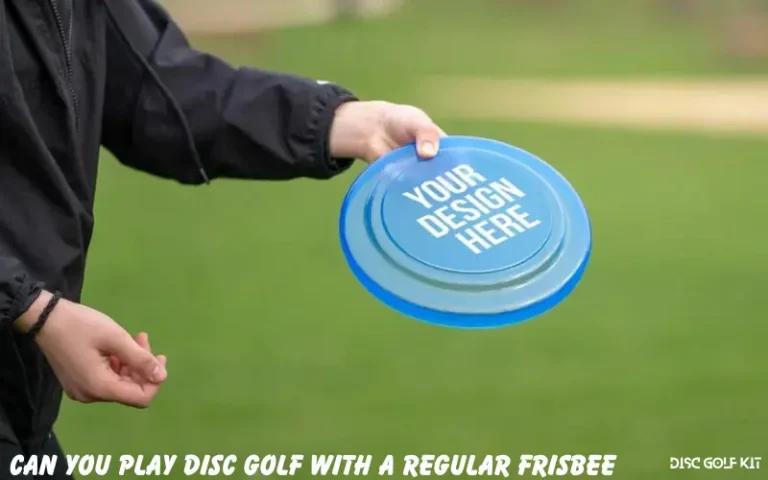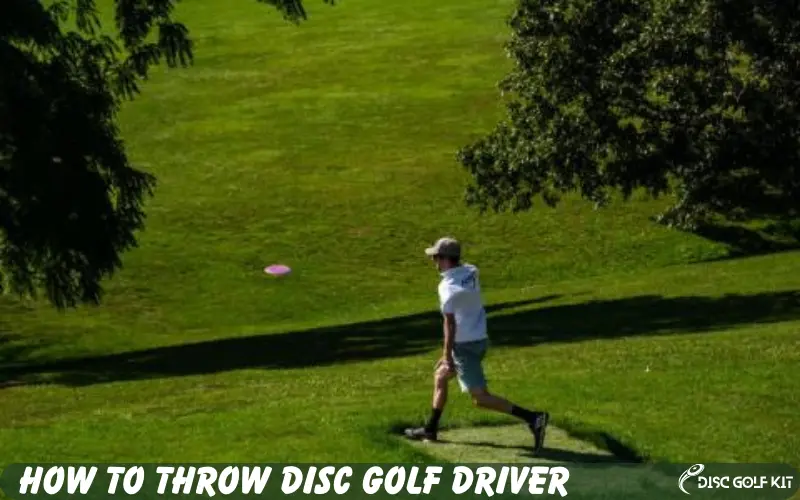
Have you ever struggled to cover maximum distance in your disc golf game? Are your throws falling short or going off-course, leaving you frustrated and lowering your score? You’re not alone. One of the most challenging yet crucial skills to master in disc golf is knowing How To Throw Disc Golf Driver effectively. Well, worry no more.
To throw a disc golf driver effectively, start by gripping the disc with your thumb on top and your fingers underneath. Assume a stance with your feet shoulder-width apart, and focus on the target you aim to hit. Hold the disc close to your body and initiate a backswing by rotating your shoulders and hips away from the target.
As you move into the forward swing, uncoil your hips and shoulders while maintaining a firm grip on the disc. Release the disc at the peak of your reach, snapping your wrist for added spin. The disc should leave your hand flat and level, flying toward your aim. Follow through entirely with your throwing arm to ensure maximum distance and accuracy.
This comprehensive guide is designed to take you from the basics to advanced techniques for throwing a disc golf driver. We will delve into the anatomy of an excellent driver throw, including grip, stance, arm motion, and release point. You’ll learn how to choose the right driver for you, the fundamental techniques every player should know, and advanced throws like the Hyzer Flip and S-Curve. Plus, we’ll cover common mistakes to avoid and how to practice effectively to keep improving your throws.
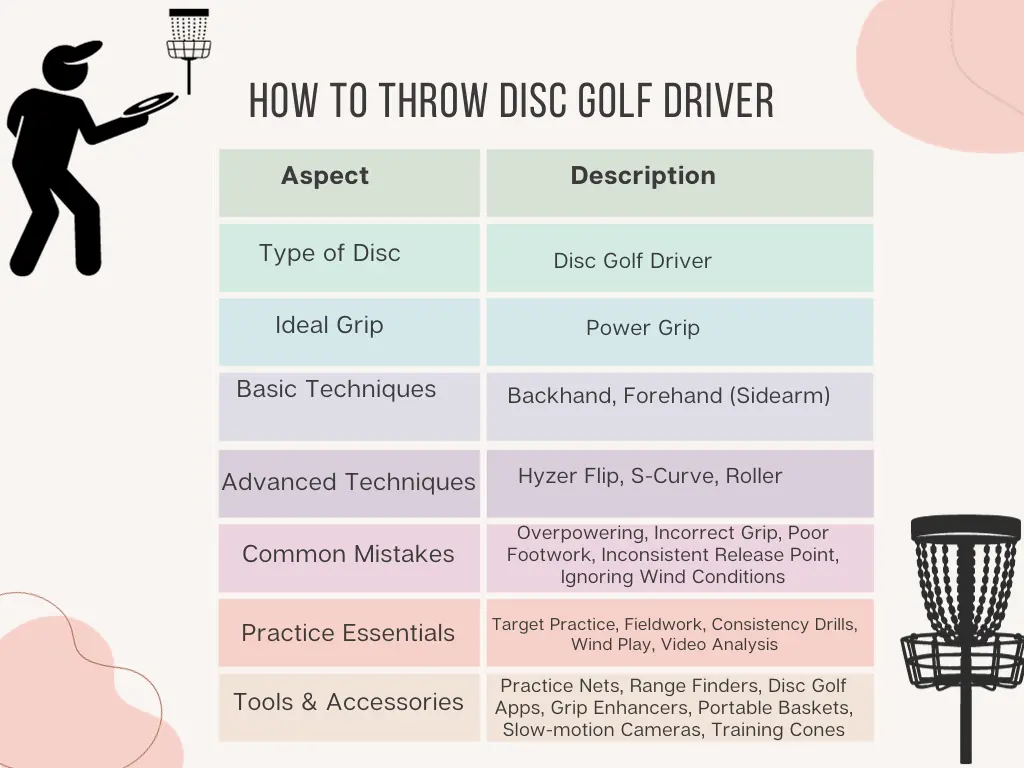
Introduction Disc Golf as a Sport
Disc golf is a dynamic sport that has captured the imagination of millions worldwide. Often compared to traditional golf, disc golf involves players throwing a flying disc toward a series of metal baskets situated along an outdoor course. The game is played much like traditional golf, but instead of hitting a ball into a hole, the aim is to get your disc into the basket in the fewest throws. Whether playing professionally or enjoying a leisurely game on the weekend, disc golf offers a compelling mix of skill, strategy, and outdoor fun.
Importance Of How To Throw Disc Golf Driver
For those who have tasted the unique thrill that comes with a perfectly executed long throw, you know there’s nothing like it. However, achieving that level of proficiency takes time. Mastering throwing a disc golf driver is crucial to elevate your game. The driver is specifically designed for long-distance throws, and getting the most out of this disc can be the difference between an average game and an exceptional one. When you know How To Throw Disc Golf Driver effectively, you can cover greater distances, navigate obstacles more efficiently, and significantly lower your score.
Why Is Throwing a Disc Golf Driver Different?
When it comes to disc golf, not all discs are created equal. A disc golf driver is a specialized tool engineered for speed and distance. These discs are generally made with a sharper edge and less surface area, cutting through the air more efficiently than other disc types. They also often feature a more “understable” design, which enables advanced players to manipulate the disc’s flight path to maximize distance. The weight distribution usually focuses on the rim, allowing for increased rotational inertia. All these unique attributes culminate in allowing the disc golf driver to cover significant distances when thrown correctly.
How a Driver Compares to Other Disc Types
There are three discs in the disc golf world: drivers, mid-range discs, and putters. Here’s how a driver compares to these:
Understanding the unique features and comparisons between different disc types is essential for knowing when and how to use your driver effectively in a game. It can distinguish between a throw that lands you close to the basket and one that leaves you struggling to recover.
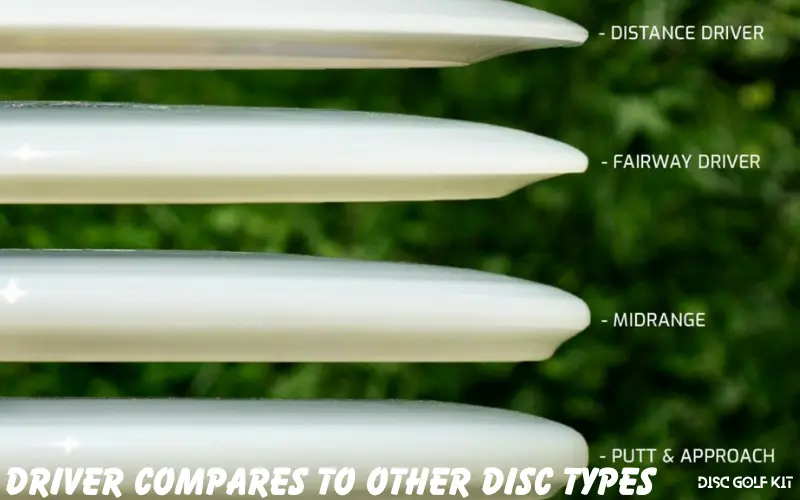
The Anatomy of a Good Driver Throw
Mastering How To Throw Disc Golf Driver involves combining factors that work in synergy to deliver the ultimate throw. Let’s break down these essential elements one by one.
Grip
The first point of contact between you and your disc golf driver is the grip. The way you grip your driver will set the stage for the rest of your throw. The most common grip for drivers is the power grip, which provides control and distance. In a power grip, all four fingers are tucked under the disc, and the thumb is placed on top, applying pressure. This grip allows you to hold onto the disc longer during your throwing motion, enabling it to gain more spin and speed before it’s released.
Stance
The stance is where your throw’s power and balance originate. Align your feet shoulder-width apart to give your body a sturdy base. Your lead foot should be slightly ahead, aligned with the target, while the back foot should be at a 90-degree angle to the target. A robust and balanced stance enables efficient energy transfer from your body to the disc, giving your throw power and accuracy.
Arm Motion
The arm motion during a driver throw must be smooth and fluid to allow for a seamless energy transfer. Initiate the throw by rotating your hips and shoulders back. As you begin your forward motion, your elbow should be close to your body to generate torque. A common visual is to imagine pulling a lawnmower cord to understand the sudden yet controlled motion required. As your body unwinds, your arm whips forward, releasing the pent-up energy into the disc.
Release Point
Often, the most challenging aspect to master is the release point. Timing is everything. It would be best to aim to release the disc at the peak of your arm’s forward motion, ensuring the highest speed and spin on the disc. Too early or too late of a release can cause the disc to fly off-course, sacrificing distance and accuracy. A well-timed release is usually level and aligns with the line of play you’re aiming for.
Choosing the Right Disc Golf Driver
Picking the perfect disc golf driver is more complex than selecting the one with the most visually appealing design. Several factors come into play, each significantly affecting your game. Understanding these factors will help you make an informed choice that complements your throwing style and skill level.
Personal Preferences and How They Play Into the Selection
Selecting the right disc golf driver is also a matter of personal preference. Factors like hand size, grip style, and throwing technique all play a role in determining which disc will work best for you.
By understanding your needs and how different factors like weight, size, and material can affect a disc’s flight, you can choose a driver that enhances your game and complements your throwing style. With the right disc golf driver in hand, you’re one step closer to mastering how to throw disc golf driver effectively.
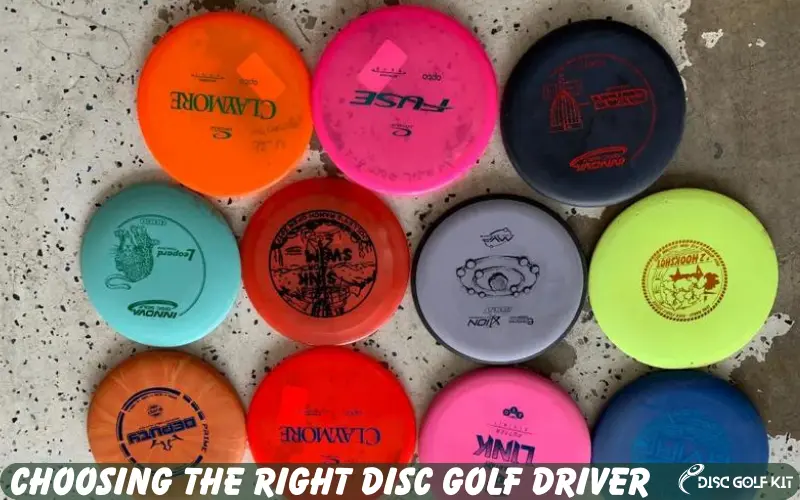
Fundamental Techniques of How To Throw Disc Golf Driver
Learning how to throw disc golf driver effectively starts with mastering the basic throwing techniques. Whether you’re a beginner or looking to refresh your basics, understanding the following throws and how grip and stance influence them is crucial for your disc golf journey.
Basic Throws Useful for Beginners
How Grip and Stance Affect Each Type of Throw
Advanced Techniques for Throwing a Disc Golf Driver
Once you’ve grasped the fundamentals well, it’s time to take your game to the next level. Advanced techniques such as the Hyzer Flip, S-Curve, and Roller can add complexity, strategy, and distance to your throws. Knowing when and how to use these techniques effectively can set you apart from the competition.
Hyzer Flip
The Hyzer Flip is a throw that starts with a hyzer angle (the edge of the disc tilted towards the ground) but flips to flat or even anhyzer (the edge of the disc leaned away from the bottom) during its flight. This allows the disc to cover a straighter and often longer distance than a typical hyzer or flat throw.
Using an understandable disc and a firm power grip, execute a Hyzer Flip. Your stance should allow for a full range of motion, as you’ll need to generate a lot of speed for the disc to flip. Start the throw at a hyzer angle and aim to release it with enough spin and speed to convert to flat or anhyzer in flight.
S-Curve
The S-Curve is another advanced throwing technique designed to maximize distance by exploiting a disc’s natural turn and fade characteristics. The throw begins with an anhyzer angle, turning to the right (for right-hand backhand throws), and then fades back to the left, tracing an “S” shape in the air.
You’ll want to use a relatively stable to slightly understable disc to perform an S-Curve. Use a power grip and a backhand throwing motion. Start with an anhyzer angle, and give the disc enough height to allow it to complete its “S” shaped flight path.
Roller
The Roller is a ground-based shot where the disc lands on its edge and rolls towards the target. This throw helps avoid obstacles like low-hanging branches or covering long distances on open fairways.
An understable disc is often preferred for a Roller, though the ideal disc may vary depending on the terrain and your particular throwing style. Depending on your comfort, your grip will be similar to a backhand or forehand. The key is to angle the disc so that when it hits the ground, it does so on its edge, initiating the roll.
These advanced techniques can add new dimensions to your game, offering a range of strategies to outplay your competitors. With sufficient practice, these throws will become second nature, allowing you to handle many situations on the disc golf course confidently.
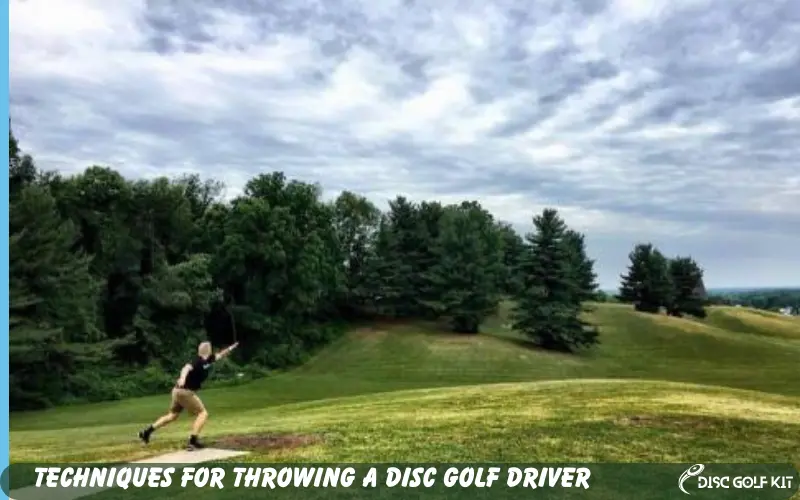
Common Mistakes When Throwing a Disc Golf Driver
Even seasoned disc golf players can sometimes fall into bad habits or make mistakes when throwing a driver. Awareness of these common pitfalls can help you avoid them and consistently perform at your best.
Overpowering the Throw
One of the most frequent errors is trying to throw the disc too hard. Overpowering can lead to a loss of control, often resulting in the disc veering off the intended course. To avoid this, focus on a smooth, controlled throwing motion rather than raw power. Remember, it’s not just about muscle; technique significantly affects how far and accurately you can throw.
Incorrect Grip
An improper grip can severely impact the flight of your disc. Whether it’s holding the disc too loosely or too tightly, the wrong grip can lead to an unpredictable throw. Ensure you’re using a grip appropriate for the type of throw you’re attempting, usually a power grip for drivers.
Poor Stance and Footwork
Your stance serves as the foundation for your throw. Incorrect foot placement can result in a lack of power and control. To correct this, make sure your feet are shoulder-width apart to provide a stable base and correctly align with your target before you throw.
Inconsistent Release Point
An inconsistent release point often results in erratic throws that hook too early or don’t fade when they’re supposed to. Practicing your timing and release can go a long way in rectifying this issue. Focus on releasing the disc at the peak of your arm’s forward motion for the best results.
Ignoring Wind Conditions
Wind can have a significant effect on the flight of your disc. Adjusting your throw to accommodate wind direction and speed is a common mistake. For example, throwing a lighter, understandable disc in strong winds can cause it to veer off course drastically. Consider the wind conditions and adjust your disc selection and throwing technique accordingly.
By being aware of these common mistakes and actively avoiding them, you can significantly improve your skills in throwing a disc golf driver. Like anything, consistent practice and a willingness to learn from your errors will make you a better player.
How to Practice
Mastering the art of throwing a disc golf driver takes time. Consistent practice, paired with targeted drills, can significantly improve your game. Here’s how you can structure your practice sessions to get the most out of them.
Drills and Routines for Mastering the Disc Golf Driver Throw
Importance of Consistent Practice
Consistent practice is crucial for several reasons:
By incorporating these drills into your routine and acknowledging the importance of consistent practice, you’ll be well on mastering how to throw disc golf driver effectively.
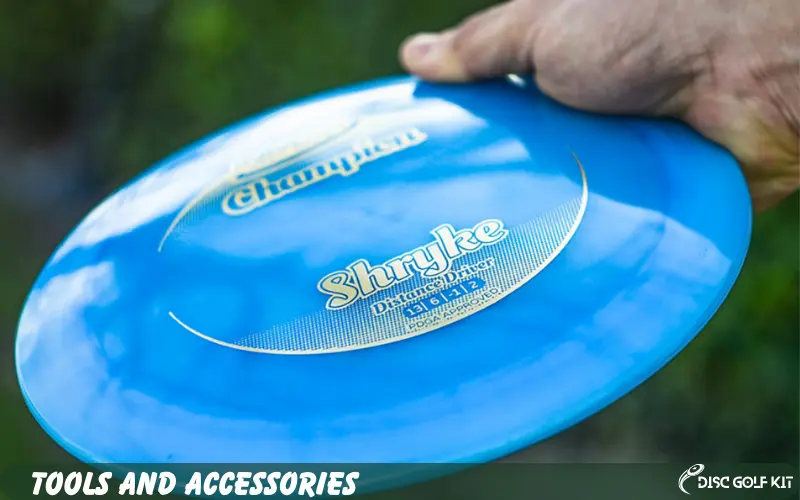
Tools and Accessories
In addition to your standard disc golf bag filled with various discs, several tools and accessories can help you hone your skills in throwing a disc golf driver. These extras can make your practice sessions more productive and add a layer of detail to your training.
Practice Nets
Having a practice net can help you work on your throwing technique without having to chase down every disc. This is particularly useful for practicing your release point and can be a real-time save.
Range Finder
A range finder can help you measure the distance of your throws accurately. This is essential for understanding the capabilities of each disc in your collection and can be instrumental in helping you choose the right disc for specific distances during a game.
Disc Golf Apps
Several disc golf apps can help you keep track of your throws, monitor your improvement, and even provide tips for better technique. These apps often come with additional features like course locators and scorecards.
Grip Enhancers
Sometimes, the grip can be a challenge, especially in wet conditions. Grip enhancers like sports chalk or grip bags can improve your hold on the disc, leading to more consistent throws.
Portable Baskets
If you have space, a portable basket can be an excellent investment. It allows you to practice putting and approach shots in addition to your drives, giving you a well-rounded practice session.
Slow-motion Camera or GoPro
Recording your throws in slow motion can offer a detailed look at your technique that you might not catch in real time. This can be incredibly useful for identifying and correcting flaws in your form.
Training Cones
Setting up training cones at varying distances can help you improve your accuracy. You can also use them to outline potential obstacles or to create a makeshift fairway during fieldwork.
By integrating these tools and accessories into your practice routine, you’ll make your sessions more efficient and gain deeper insights into improving your disc golf driver throws. Whether it’s a grip enhancer for better control or a slow-motion camera for scrutinizing your form, these add-ons can significantly contribute to your development as a disc golfer.
Conclusion
Throwing a disc golf driver effectively is a skill that requires more than just brute force; it demands a deep understanding of the mechanics, a well-chosen disc, and a mastery of both basic and advanced techniques. This article has covered everything from understanding why throwing a disc golf driver is different, diving into the anatomy of a good driver throw, exploring various techniques, and avoiding common mistakes. We’ve also provided practical ways to practice and suggested tools to elevate your training sessions.
Mastering how to throw disc golf driver will take time, but with consistent practice and the right approach, you’ll not just throw but strategically place your drives on the fairway, setting yourself up for lower scores and more satisfying rounds.
Now, it’s your turn to take action. Don’t just read—head to the course or your local field and apply what you’ve learned. Whether you’re a novice or an experienced player looking to fine-tune your skills, the path to becoming a more accomplished disc golfer starts with that first focused throw. So grab your disc, consider your grip and stance, and let it fly. The fairway awaits!
Frequently Asked Questions

Written by
Declan Hodgson
Meet Declan Hodgson, your disc golf sherpa at DiscGolfKit.com. Navigating the twists and turns of the sport, I’m here to guide you through the world of discs, gear, and the pursuit of that perfect throw.
